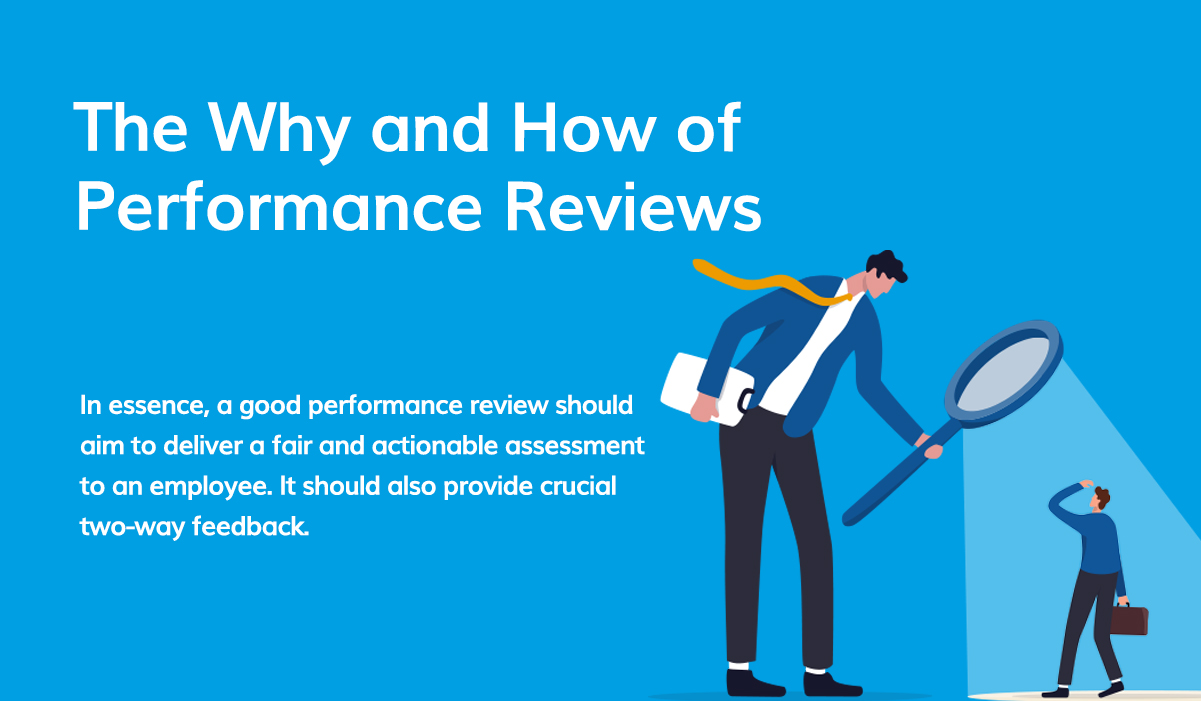No one loves performance reviews. In essence, a good performance review should aim to deliver a fair and actionable assessment to an employee. It is also two-way. They should also provide both the manager and the employee with crucial feedback.
The reality is that that’s rarely the result. They’re disliked by employees and employers alike. In fact, around 30 Fortune 500 companies have replaced performance reviews with other approaches. However, even without performance reviews, opinions and rankings are still formed on employees. The difference is they are far less transparent and an employee cannot do anything to improve their success within the company, because they might not be aware of their shortcomings, to begin with. These “opinions” and perceptions are being formed without input from the individual being evaluated.

The Why
Performance can be described as the value of an employee’s contributions to a company over time. That value needs to be assessed in some way. How will you evaluate who deserves the next promotion? Who deserves a pay raise? This means that if you don’t organise formal performance evaluations, these ratings will be hidden.
The truth is that performance reviews are not always fair, but scrapping them all together is worse. Within every organisation, you will find employees who are unhappy with their current pay or disappointed that they weren’t promoted. If performance evaluations are more transparent and the process is fair, employees are more willing and accepting of the outcome. Without evaluations, people are left in the dark about who is gauging their work and under what criteria.
People want to know where they stand, and performance evaluations offer this opportunity for transparency. As an employee, performance evaluations should help you understand what the company expects from you and where you can improve, as well as give you the opportunity to be rewarded for your performance.
The importance of structured reviews
Some companies favour ongoing performance reviews over annual reviews, but as mentioned, there still needs to be a degree of structure. Lack of structure and clear evaluations leads to uncertainty. Neuroscientists have, in fact, discovered that uncertainty leads to more intense neural reactions than negative feedback. It’s better the devil you know, after all. Therefore, the solution should not be to throw out performance ratings entirely or forget them because they’re uncomfortable. Instead, build a culture that recognises and rewards growth. Employees cannot be expected to perform at 100% all the time. You may perform better this year than the next, and perform even better the year after.
Another advantage to performance reviews is the opportunity for development. In an HBR article, Peter Cappelli and Anna Travis claim that the truth is that many think that performance reviews prioritise accountability over development and that should not be the scope. Performance reviews allow for an overall assessment, a clear full picture of an employee that allows them the opportunity to understand what they need to prioritise. What is more important to you as a manager and what is more important for the company? When performance reviews are ongoing, it may feel like a constant barrage of feedback and you never know what an employee might fixate on. Structured, more formal, reviews will fix that. A well-conducted employee evaluation can help motivate an employee and gives them direction within your organisation. It’s an opportunity to underline priorities.
Last but not least, a study by Deloitte reveals that companies that conduct effective performance reviews are 30% more likely to meet their financial target and three times more likely to manage change successfully.
The How
A poorly conducted performance evaluation can leave workers feeling more confused than before, disengaged, and demotivated. Conducting performance reviews the right way will go a long way to ensure the opposite. In this second part of our article, we discuss how.
1. Prepare your notes and feedback
Do not go in empty-handed! An employee evaluation underlines the value you give your employee. Going into this evaluation meeting, facing your employee empty-handed will send the wrong message. It will translate as a lack of thought on your part. Your employee will easily feel devalued and demotivated. If it makes it easier, prepare an employee evaluation form and fill it in. Having all the comments formulated beforehand, you’re making sure you do not miss out on important points.
2. Be clear
Always aim to be as transparent as possible. Don’t beat around the bush, it won’t help anyone. You don’t want your employees to leave the meeting feeling more confused than before. Give specifics and clear examples. If you’re setting goals for your employee, make sure a clear timeframe is set and a defined method of management, so employees know exactly how you’ll determine their success.
3. Keep it a two-way conversation
This is not a lecture. Allow room for discussion, and allow your employee to explain their shortcomings. It is also a chance for employees to reveal their own self-assessments, their biggest challenges, and where there might be room for improvement.
If an employee is not very talkative, ask questions. Ask them about what they’re most proud of, where they feel they’ve made the most progress, and where they feel they can improve. Always ask your employee how you can support them in achieving their goals.
4. Always look forward
Don’t focus on past failures. After you’ve discussed past performance, make sure to look forward. Outline new goals, and share your plans for their future. If you have plans for the team, a performance review is a good chance to mention this. In the same way, you give their objectives a timeline, give yourself one. If you’ve promised a promotion in the near future, make the timeline clear. Don’t leave room for ifs and maybes. Don’t let them leave the meeting discouraged and demotivated!
5. Don’t wait a whole year
A lot can happen in a year. Conduct regular and less formal review sessions to alleviate the pressure and course-correct. It also gives more room for an employee to feel more comfortable discussing their challenges and achievements with you, making receiving feedback less of a daunting experience. Bringing up areas of improvement as soon as it happens, allows the employees the chance to change behaviour immediately.
6. Don’t let it be forgotten
Go through previous evaluations and see if objectives are met and what was improved upon. Recognise and applaud when an employee has stepped up and underline what still leaves room for improvement. More importantly, don’t postpone evaluations! Stick to the structure to set out and if need be, remind yourself why they’re important by re-reading this article…
Do you hold regular employee evaluations? What other feedback strategies have you found to work? Submit your article to us here.

